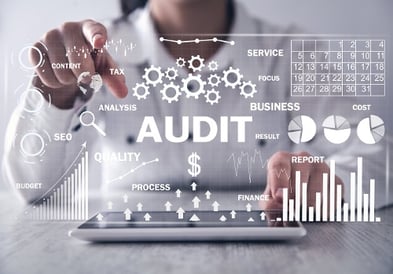 Each year, most organizations and their retirement plan fiduciaries must go through their annual 401(k) (or 403(b)) audit. Employee retirement plans are heavily governed by the Department of Labor (DOL) and Internal Revenue Service (IRS); and, the retirement plan audit makes sure that all the work involving the Plan was done correctly throughout the year, and if it wasn’t, identify the proper steps are taken to fix things and implement controls to prevent issues in the future.
Each year, most organizations and their retirement plan fiduciaries must go through their annual 401(k) (or 403(b)) audit. Employee retirement plans are heavily governed by the Department of Labor (DOL) and Internal Revenue Service (IRS); and, the retirement plan audit makes sure that all the work involving the Plan was done correctly throughout the year, and if it wasn’t, identify the proper steps are taken to fix things and implement controls to prevent issues in the future.
As you may know (and experience each year), the retirement plan audit can be the biggest and longest of your plan’s administration processes. But don’t worry, by the end of this checklist you’ll be ready to approach your annual audit proactively and (relatively) pain-free.
The first step to any audit is determining if and when you’ll be audited. For small plan filers (organizations with less the 100 Plan participants) audits can be performed randomly, or for cause, by the DOL and/or IRS. For large plan filers (100+ participants, after “transition rules” that allow you up to 120 participants before your first audit), these audits are performed annually and most accompany your Form 5500 tax filing.
For large filers – being proactive in planning your timeframe to have your CPA / audit firm perform their work is very worthwhile and helpful. For all Plan Fiduciaries, including small filers who may have some worry over receiving an audit letter, ensure you are following the guidelines of your plan and – with the help of your Retirement Plan Advisor, have the following requirements ready:
Fiduciary Records:
- Minutes of meetings of the plan committee, investment committee or other similar committee
- Current plan document and all amendments
- Service agreements with third-party service providers, including any amendments to the agreements
- Investment contracts with insurance companies, if applicable
- Fiduciary insurance documents
- IRS determination letter
- Supporting documents for any corrections made to the plan during the year
Year-End Records:
- Contributions reconciliation between recordkeeper reports and payroll
- If applicable, matching and profit sharing contribution reconciliation to trustee reports
- Recordkeeper and Asset Custodian Service Auditors’ Reports (SSAE 16), as applicable
- Participant valuation summary report, reconciled to trustee reports, if separate
- Distribution reports, including 1099 summary
- Participant loan reports, including deemed distributed loan records
- Year-end payroll report
- Draft Form 5500
- Contribution records showing timeliness of remittance of participant deferrals
- Nondiscrimination testing reports
Participant Records*:
- Enrollment forms
- Deferral change forms
- Wage rate/salary approval
- Distribution request forms
- Rollover request forms
- Participant loan application, promissory note and payment schedule
*Depending on the services provided by the recordkeeper, you may have different records available in paper format vs electronic format accessible through a plan sponsor website with the recordkeeper
Your Advisor should proactively consult and lead you through the audit process. When pairing up with an advisor they should take the lead on maintaining records of plan documents, amendments, and required notices/communications to employees. The advisor will draft, maintain, and provide minutes for Committee minutes, and provide guidance, clarification, and advice on questions and discrepancies raised by your auditor. Overall, an advisor should be the guide throughout your audit. Please reach out to our team if you need help with your next audit or if you have any questions about your retirement plan.
